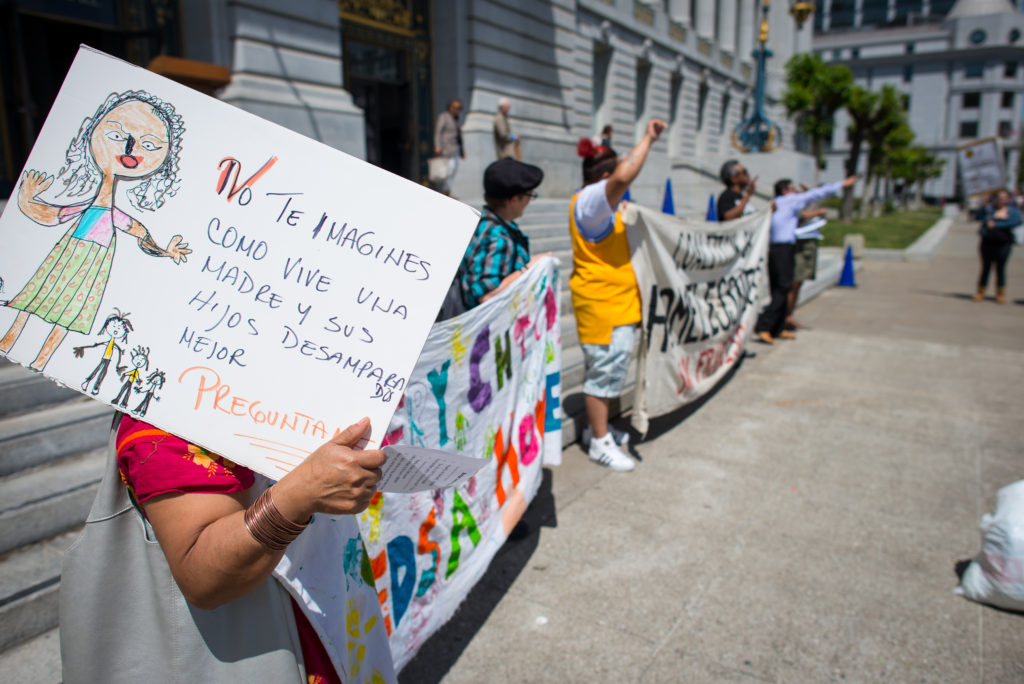Earlier this year, San Francisco’s Department of Homelessness and Supportive Housing (HSH) implemented a program known as ‘coordinated entry’ for homeless family shelter, which prioritizes families trying to get stable shelter based on where they are staying at time of requesting shelter. A coordinated entry program, per federal law, should be low-barrier, fair access, inclusive, housing first, and full coverage, but advocates and providers for the homeless, such as Homeless Emergency Service Providers Association (HESPA), say that San Francisco’s coordinated entry program is failing to meet these basic program guidelines.
During the lead up to Coordinated Entry, most homeless families said there was little consistent, up-to-date information about next steps for housing post-discharge. One participant said that the disorganization made the whole thing seem “hopeless,” adding that, “Sometimes you have to fill out the same form over and over. It seems like they are throwing your forms in the garbage.” This is the premise for Coordinated Entry — that and a system to ration scarce services.
When this rationing system is used on shelter, many problems present. For one, the system has a set of preferences that do not take into account the reality homeless families face and since they are moving around, it does not make sense to base preferences solely on where people are staying. For example the new system gives top preference to families out on the streets. Homeless families have often experienced trauma, such as domestic violence or trading sex for a place to stay, and in order to get priority for family shelter, they must first be living on the street, forcing them to choose to move outside and prove their homelessness to gain access to services. Domestic violence survivors are also required to recite their story but in both these situations families do not care to, because they fear loss of their kids to child protective services. .
“We understand there is not full consensus (on the program),” writes Director of the HSH, Jeff Kositsky, “but it is time to implement.”
HESPA disagrees. There are still major issues, they say, such as the inability for pregnant homeless women to gain access to family shelter until their third trimester. During the first two trimesters, the mother will be forced to sleep outside or, as Director Jeff Kositsky writes, “are welcome to stay in the single adult shelter system,” a waitlist that is currently over 1000 people long and an average of five weeks, risking the developmental health of her unborn child in the meantime.
The coordinated entry program also requires homeless families to register their child(ren) in San Francisco’s Unified School District, violating the Homeless Emergency Assistance and Rapid Transition to Housing Act (HEARTH) of 2009 — specifically the education subtitle of the McKinney-Vento Act. According to the McKinney-Vento Act, homeless children and youth have the right to continue their education in their “school of origin” — e.g., the school that the child or youth attended when permanently housed, or the school in which they were last enrolled. 42 USC §11432(g)(3)(A).
As noted in this earlier article, Jennifer Friedenbach, director of the Coalition on Homelessness, the organization that publishes Street Sheet, wrote that mobility between school districts is common among homeless children and youth, which is why the McKinney-Vento Act establishes the right of students to remain in their school of origin, regardless of school district boundaries, as they move. Children who change schools fare worse on academic assessments, are more likely to repeat a grade or to drop out and have their emotional and social well-being compromised. One study found that youth aged 11 to 17 were twice as likely to attempt suicide if their families moved three or more times compared to those who had never moved.
In response, Kositsky writes, “HSH will not be making this (school origin) change. We believe it important to focus our resources on San Francisco families and not encourage others to come to the City given the high cost of housing and limited resources. To do otherwise would be guaranteeing long stints of homelessness of families; we find this to be unacceptable given what we know about the impact of long-term homelessness on children.”
But, as HESPA notes, homeless and poor families are often forced to move, even if they still work or at one time lived in San Francisco. Perhaps adding a simple question to the program, such as “Have you been employed in the City of San Francisco or lived in the City of San Francisco in recent years?” could fill in the cracks that many families may fall through. Out of over 650 homeless families in San Francisco, only 7 (about 0.1 percent) had come from outside San Francisco, and families move elsewhere temporarily due to extraneous circumstances, such as language barriers in service programs. One participant in the coordinated entry trial program noted that, “Most of the Spanish speaking staff work in Oakland, so you have to make a special trip if you are in San Francisco.”
The coordinate entry program seems to be well intended and could work very well, HESPA says, but like other policies implemented by the City in recent years, the program may fail because those implementing the program have willingly chosen to close their ears. In 2011, 48 percent of homeless people in the City’s lived on the street. In 2015, it was up to 58 percent. In 2011, 255 homelessness families found in transitional housing. In 2015, the number was down to 226. In 2013, the percentage of homeless youth and children in transitional housing was 10 percent. By 2015, it was 6 percent, a rate lower than the percentage of young people accepted into Harvard.
These policies aren’t working. Something needs to change. Perhaps listening would be a good place to start. Words mean experience. Hearing these words mean helping each other. It’s a better place to be than where we’ve been going.≠


